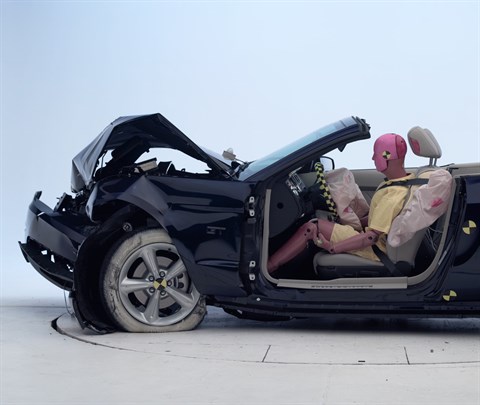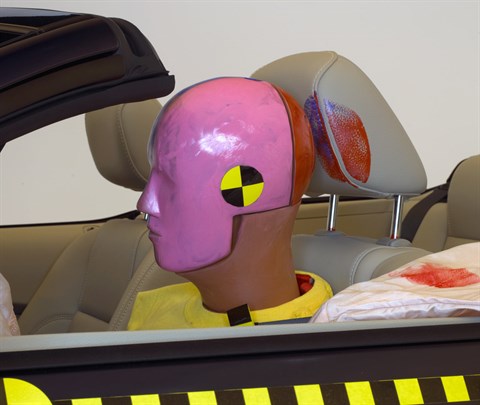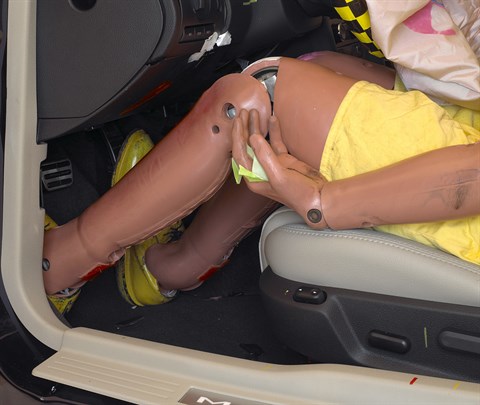Moderate overlap front: original test
Rating applies to 2010-14 models built after December 2009
Tested vehicle: 2010 Ford Mustang GT convertible
The Ford Mustang was re-engineered and restyled for the 2010 model year.
Two tests of a 2010 Mustang convertible were conducted. In the first test, forces recorded on the dummy's neck were high, leading to a poor head/neck injury rating and a poor overall rating. In response, Ford modified the convertible's front structure and the doors to improve occupant protection in frontal offset crashes beginning with cars manufactured after December 2009 (note: information about when a specific vehicle was manufactured is on the certification label typically affixed to the car on or near the driver door).
In the second test of a car built after the structural modifications were in place, the head/neck and overall ratings improved to good.
| Evaluation criteria | Rating |
|---|---|
| Overall evaluation | |
| Structure and safety cage | |
| Driver injury measures | |
| Head/neck | |
| Chest | |
| Leg/foot, left | |
| Leg/foot, right | |
| Driver restraints and dummy kinematics | |

Action shot taken during the frontal offset crash test.

The dummy's position in relation to the steering wheel and instrument panel after the crash test indicates that the driver's survival space was maintained reasonably well.

Smeared greasepaint shows where the dummy's head contacted the side airbag and head restraint during rebound.

Despite moderate intrusion into the driver footwell, all leg and foot injury measures were low.
Side: original test
Rating applies to 2010-14 models
Tested vehicle: 2010 Ford Mustang convertible with standard front seat-mounted combination head and torso airbags
The Ford Mustang was re-engineered and restyled for the 2010 model year. Side ratings are assigned by the Institute based on a test conducted by Ford.
| Evaluation criteria | Rating |
|---|---|
| Overall evaluation | |
| Structure and safety cage | |
| Driver injury measures | |
| Head/neck | |
| Torso | |
| Pelvis/leg | |
| Driver head protection | |
| Rear passenger injury measures | |
| Head/neck | |
| Torso | |
| Pelvis/leg | |
| Rear passenger head protection The dummy's head was hit by the interior side trim and convertible boot (cover for the folded roof). These impacts did not produce high head injury measures, but the head protection is inadequate. | |
Head restraints & seats
Seat type: Power leather seat with 4-way head restraint manufactured after July 2011
| Overall evaluation | |
|---|---|
| Dynamic rating | |
| Seat/head restraint geometry |
About the head restraint & seat test
Currently, IIHS tests apply only to front seats.
